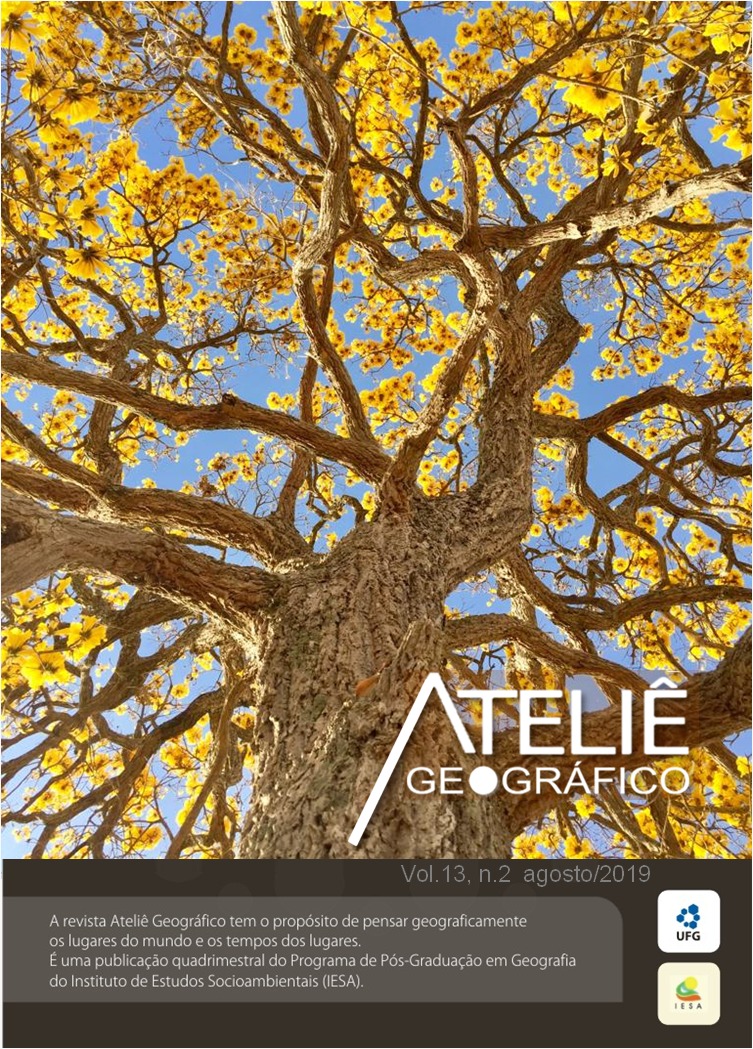Manna, charisma and hierophany: understandings of the sacred for the Geography of Religion
DOI:
https://doi.org/10.5216/ag.v13i2.55773Abstract
Space is not an a priori. Your apprehension occurs in function of geographical spatialities. How do we construct spatial conceptions? Why do we categorize it between sacralities and profanities? The concepts of manna, charisma and hierophany, referring to the manifestation of the sacred, direct us to the understanding of the geographical space as a contribution of the religious phenomenon. Thus, our intention is to analyze how formulations of these concepts were significant to the consolidation of the Geography of Religion. To do so, we turn to the comparative studies of Émile Durkheim's classics: "Elemental Forms of Religious Life" (2008); of Marx Weber: "Society and Religion" (2009); of Mircea Eliade: "The sacred and Profane" (2010) and Zeny Rosendahl: "Hierópolis" (2009), among others. In a first approximation we point out your existence, the differentiation and qualification of the sacred and profane spaces defended by these authors. Only with these cognitive classifications did man of primordial times manage to locate and configure space. From now one we can formulate some geographical knowledge towards a Geography of Religion.
Keywords: Images; Sacred Space; Profane Space; Hierophany.
Downloads
Downloads
Published
How to Cite
Issue
Section
License
Autores que publicam nesta revista concordam com os seguintes termos:- Autores mantém os direitos autorais e concedem à revista o direito de primeira publicação, com o trabalho simultaneamente licenciado sob a Licença Creative Commons Attribution que permite o compartilhamento do trabalho com reconhecimento da autoria e publicação inicial nesta revista.
- Os autores não serão remunerados pela publicação de trabalhos na Revista Ateliê Geográfico. Além disso, os conteúdos publicados são de inteira e exclusiva responsabilidade de seus autores, ainda que reservado aos editores o direito de proceder a ajustes textuais e de adequação às normas da publicação.
- Autores têm permissão e são estimulados a divulgar seu trabalho online (ex.: em repositórios institucionais ou na sua página pessoal), já que isso pode gerar alterações produtivas, bem como aumentar o impacto e a citação do trabalho publicado (Veja O Efeito do Acesso Livre).


